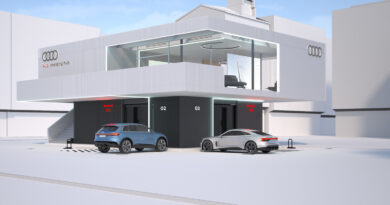Uber fast: Electric hypercar-maker Rimac announces it’s branching out into robotaxis, with first driverless cab due in 2026
The Croatian hypercar maker behind the 1408kW Rimac Nevera has announced it will reinvent itself in 2024 with a concept for a driverless robotaxi that previews a production version slated to arrive in 2026.
Instead of abandoning its Bugatti-baiting hypercars, the new robotaxis will be developed under Rimac’s new Project 3 Mobility division.
READ MORE: What it is really like to catch a self-driving robotaxi
Helping fund the ambitious robotaxi will be Kia, although it’s not known just yet how much funding is coming from the Korean car-maker.

Few details have been released so far but it’s thought that the car being developed by Rimac will be capable of driving entirely without human input, suggesting at least advanced Level 4 autonomous driving capability – and possibly even level 5 autonomy.
As part of the project Rimac will develop the infrastructure needed for the new robotaxis to operate, including creating the chargers, storage hubs and even parking structures needed to hold the cabs when not in use.
It’s not known if Kia will be Rimac’s production partner as part of its investment but early reports suggest the vehicle the Croatian firm is working on will be a “completely different type” of car, suggesting a pod-like design that will maximise space.

Rimac released a video of the prototypes in operation that are based on the last-generation Renault Espace people mover, adding credibility to the autonomous pod speculation.
Kia’s parent, Hyundai Motor Company bought a US$90 million ($135m) stake in Rimac back in 2019.
Once launched, Project 3’s website suggests that users of its ride hail service will be able to control the Rimac robotaxi’s infotainment system using their own smartphone app.
Ahead of the robotaxi’s 2026 debut it’s believed that Rimac has signed agreements with five different undisclosed cities to introduce its autonomous ride hail service service, with a further 35 other cities around the world also confirmed to have expressed an interest.

Rimac last year set a mind-blowing 20 acceleration and braking records in just one day with its Nevara hypercar, including clocking 412km/h top speed making it the fastest EV ever. If that wasn’t impressive enough, the Croatian car-maker’s engineers then set a new Guinness World Record in reverse gear, following the Nevera hit 275.74km/h travelling a backwards.
Back in 2021 Rimac and French hypercar-maker Bugatti formed a joint venture to become Bugatti Rimac as part of a complex arrangement that saw the Croatian firm bag a controlling 55 per cent interest in the new business, with Porsche holding the final 45 per cent share.




